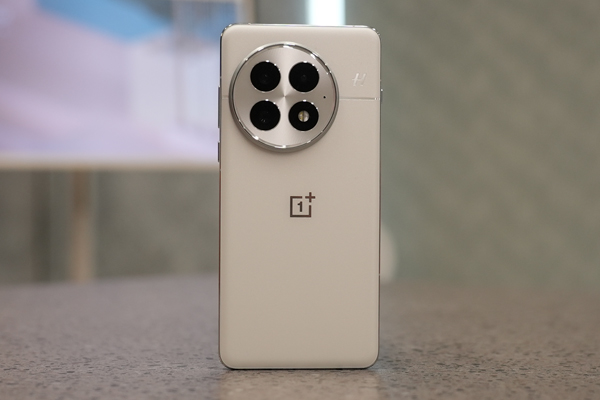
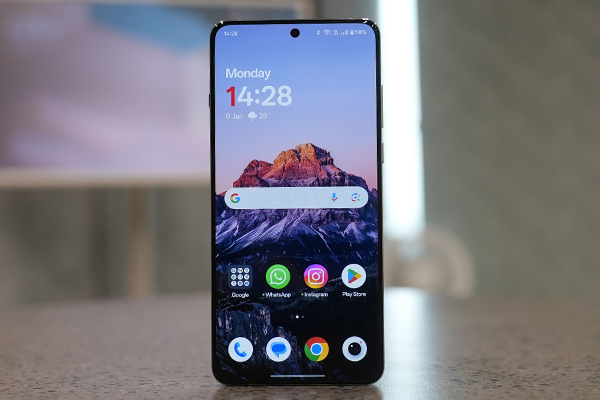
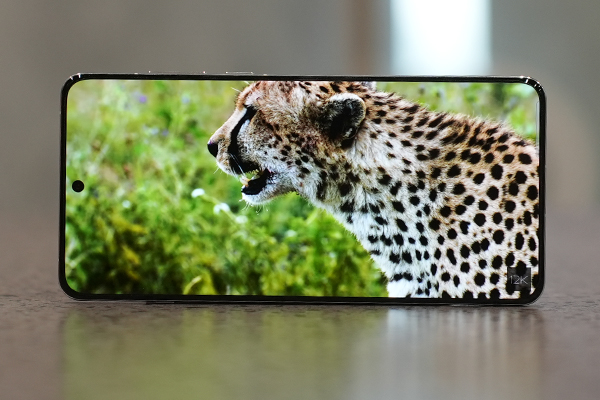
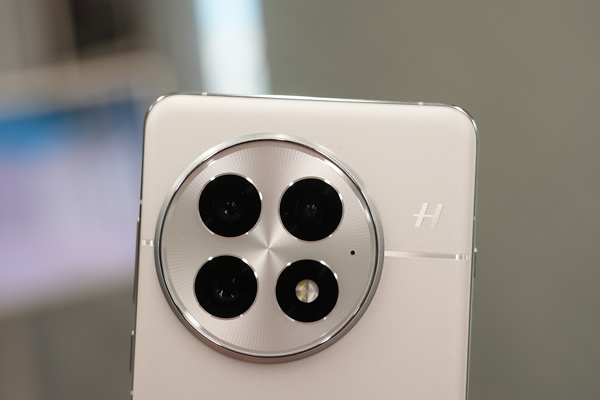
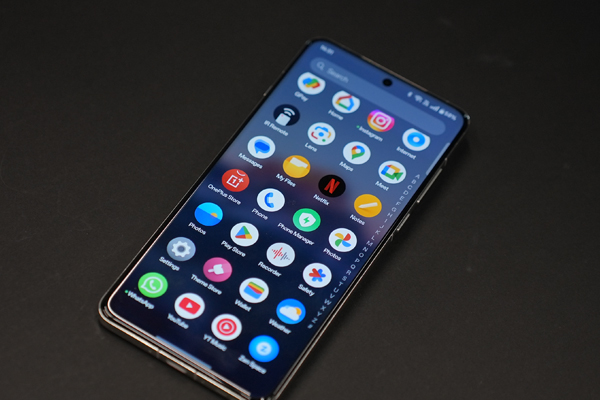
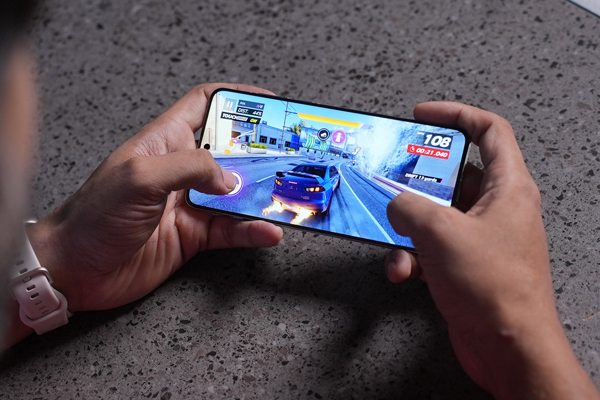
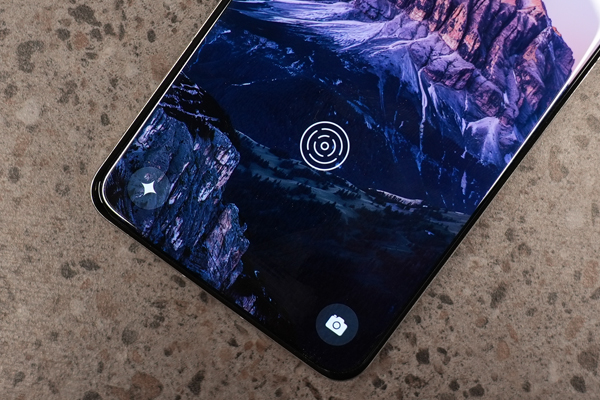
Overall Rating 4/5
Price Starts From ₹ 69,999/-
PROS 👍
- Stunning QHD+ AMOLED
- Thumping everyday performance
- Elegant design with IP68/69 ratings
CONS 👎
- Telephoto camera trade-offs
- Software features need polish
The OnePlus flagship is the first big smartphone launch every year. Keeping that tradition alive is the OnePlus 13, which has arrived bearing top-notch specs, including the Snapdragon 8 Elite chip. As always, there’s a lot of intrigue surrounding its cameras, which have unsurprisingly retained the Hasselblad branding. And amidst all this, let’s not forget that it has embraced a bevvy of premium features that are looking to capture the imagination of Indian buyers. Its competitors, the OPPO Find X8 Pro and the vivo X200 Pro, are both priced considerably higher, so it would be particularly interesting to see how it performs against them. That’s exactly what we’re going to do in this review, so let’s get going.
OnePlus 13 Review: Power-packed, stylish, and almost perfect.
Design

Its flat frame is the first thing my palms noticed when I held the OnePlus 13 for the first time. It’s surely elegant to the touch and makes the phone feel secure and grippy. Flipping it over, you’ll find a left-oriented camera cluster with the Hasselblad logo accompanying it. The review unit I’ve got is the Arctic Dawn colour variant, which gets a frosted glass-like finish. Whatever the material, the rear surface feels pristine to the touch and goes very well with the flat frame. It plays home to a rather chunky camera cluster that offsets the phone’s otherwise thin 8.5mm profile. The device’s overall weight of 213gms can’t be described as light, but its overall feel seldom made me realise this.
On the front, the 6.82-inch display sprawls like snow on the Everest thanks to its strong screen-to-body ratio. Like the vivo X200 Pro, the fingerprint scanner is placed slightly below the centre, which is a welcome choice, especially when compared to the OPPO Find X8 Pro, which has chosen to place it right at the bottom. Rounding up the design features of this phone are its IP68 and IP69 ratings, which are quite handy to have. Using the device underwater should never invoke any worries.
Display and sound

When a phone is going for a ‘premium’ tag, having a display to suit that adjective is a must. The OnePlus 13 hasn’t disappointed in this department. In fact, it might just be home to one of the finest displays a smartphone has ever sported. The 6.82-inch QHD+ AMOLED panel elevates the visual experience with a buttery-smooth 120Hz adaptive refresh rate, ensuring seamless transitions whether you’re swiping through social media or playing graphics-heavy games like Call of Duty: Mobile.

Using this display under heavy sunlight is absolutely easy, given its ability to render 1600 nits of brightness. But that’s by no means its peak – the panel can reach up to 4500 nits of brightness when playing HDR content. Thanks to support for Dolby Vision and HDR10+, it was an absolute delight to stream movies and TV shows on the OnePlus 13. Some of the credit for this also goes to the stellar stereo speakers present on the handset. It’s crazy how loud they can get without losing any sound quality.
Camera

The main change in the OnePlus 13’s camera module is the new Triprism telephoto camera that’s lighter and more compact than the previous periscope design. The upgrades include switching to the Sony LYT-600 sensor for 3x optical zoom and replacing the ultrawide sensor with a 50MP S5KJN5, which performs better in low light and controls distortion effectively.
In my hands-on testing, the primary camera impressed me with sharp photos, accurate colours, and solid dynamic range. Even in low light, it captured good details without overexposing highlights or crushing shadows. However, the 2x zoom (a crop from the main sensor) is unchanged and still lacks quality in any lighting condition. The Triprism telephoto camera produces excellent detail up to 6x magnification, but it has limitations. I found it to underperform when it came to capturing close-ups. While slimming the phone is nice, the trade-off feels like a step back for telephoto enthusiasts. On the brighter side, the ultrawide upgrade delivers clean, detailed images even in dim settings.
That said, colour processing across the cameras feels inconsistent, with each sensor doing its own thing. To achieve more accurate tones, I recommend switching to Master mode. Zooming past 10x is where quality dips. Although AI Zoom (enabled at 60x) can sometimes surprise with creative results, most of the images beyond 10x are barely usable. Selfies are sharp with good edge detection in daylight, but low-light shots remain soft, just like on the OnePlus 12. For video, 4K at 60 fps is where the OnePlus 13 shines, offering smooth stabilisation and great quality. However, 4K at 30 fps feels a step down compared to the sharper, albeit noisier, footage from the OnePlus 12.
The OnePlus 13’s camera setup offers solid upgrades in ultrawide and portability, but telephoto enthusiasts may miss the versatility of its predecessor. Still, it holds its ground as a capable flagship for everyday photography and video.
Performance

The OnePlus 13 delivers top-tier performance for everyday tasks and multitasking thanks to its adoption of the 3nm Qualcomm Snapdragon 8 Elite chip. The software feels smooth and fluid, and the haptics are crisp and well-tuned for OxygenOS 15, adding to the premium experience. In benchmarks, the OnePlus 13 is way ahead of last year’s flagships and even edges past the scores of the OPPO Find X8 Pro and the vivo x200 Pro, both of which carry the Dimensity 9400 chip inside them. But this difference isn’t much. Take the OPPO Find X8 Pro’s Geekbench score, for instance. It scores 2823 in the single-core test and 8478 in the multi-core test. As opposed to that, the OnePlus 13 scores 2912 and 8678, respectively. On the GPU test, though, the OnePlus 13 falls behind by a big margin of 2015 points, but that’s most likely due to the fact that its display grabs much higher resolution.
Coming to gaming, Genshin Impact ran at a steady 60 fps on the highest settings without stutters. Call of Duty: Mobile and Asphalt 9 also performed flawlessly with consistent frame rates and zero lag. That said, I noticed the device getting slightly warm after 30 minutes of intense gaming, especially near the camera module. While the temperature didn’t reach uncomfortable levels, it’s something to be aware of for heavy gamers. All in all, the OnePlus 13 offers a buttery-smooth experience for work and play, handling demanding games with ease.
Software and AI

The thing about the OnePlus 13’s software is that it borrows heavily from ColorOS 15. OxygenOS 15 will feel very familiar to anyone who’s used a recently released OPPO handset. AI image editing tools like AI Eraser and AI Reflection Eraser are functional but inconsistent. Familiar tools like the AI Summary and AI Speak in the Smart Sidebar are just as useful as on the Find X8 Pro. AI Reply also provides well-written contextual responses, though it only supports select apps.
One feature I truly enjoyed was Open Canvas, now available on regular smartphones after debuting on the OnePlus Pad 2. It transforms multitasking by letting you stretch one app’s window up to 80% while the second app peeks from the edge. Switching between apps is seamless, making it far more intuitive than the traditional split-screen mode. This small innovation significantly improves multitasking without constant adjustments. While OxygenOS 15 adds some exciting features like Open Canvas, it still needs refinement in areas like search and AI tools to compete with industry leaders like Google. It’s a solid step forward, but there’s room for growth.
Verdict

The OnePlus 13 builds on the brand’s flagship legacy with a robust mix of style, performance, and thoughtful upgrades. While its Snapdragon 8 Elite chip ensures smooth multitasking and gaming, the Triprism telephoto camera brings a fresh approach to photography, albeit with some compromises. The QHD+ AMOLED display is a showstopper, delivering top-notch visuals that elevate entertainment and gaming. However, its reliance on ColorOS-inspired OxygenOS 15 leaves room for improvement in AI features and software refinement. Despite minor shortcomings, the OnePlus 13 shines as a versatile flagship that delivers premium experiences at a relatively competitive price.
Key Specification
| Display: | 6.82″ AMOLED, 120Hz |
| Camera: | 50MP + 50MP + 50MP |
| RAM: | 16GB |
| Processor: | Qualcomm Snapdragon 8 Elite (3 nm) |
| Battery: | 6000 mAh |
| OS: | Android 15 |













